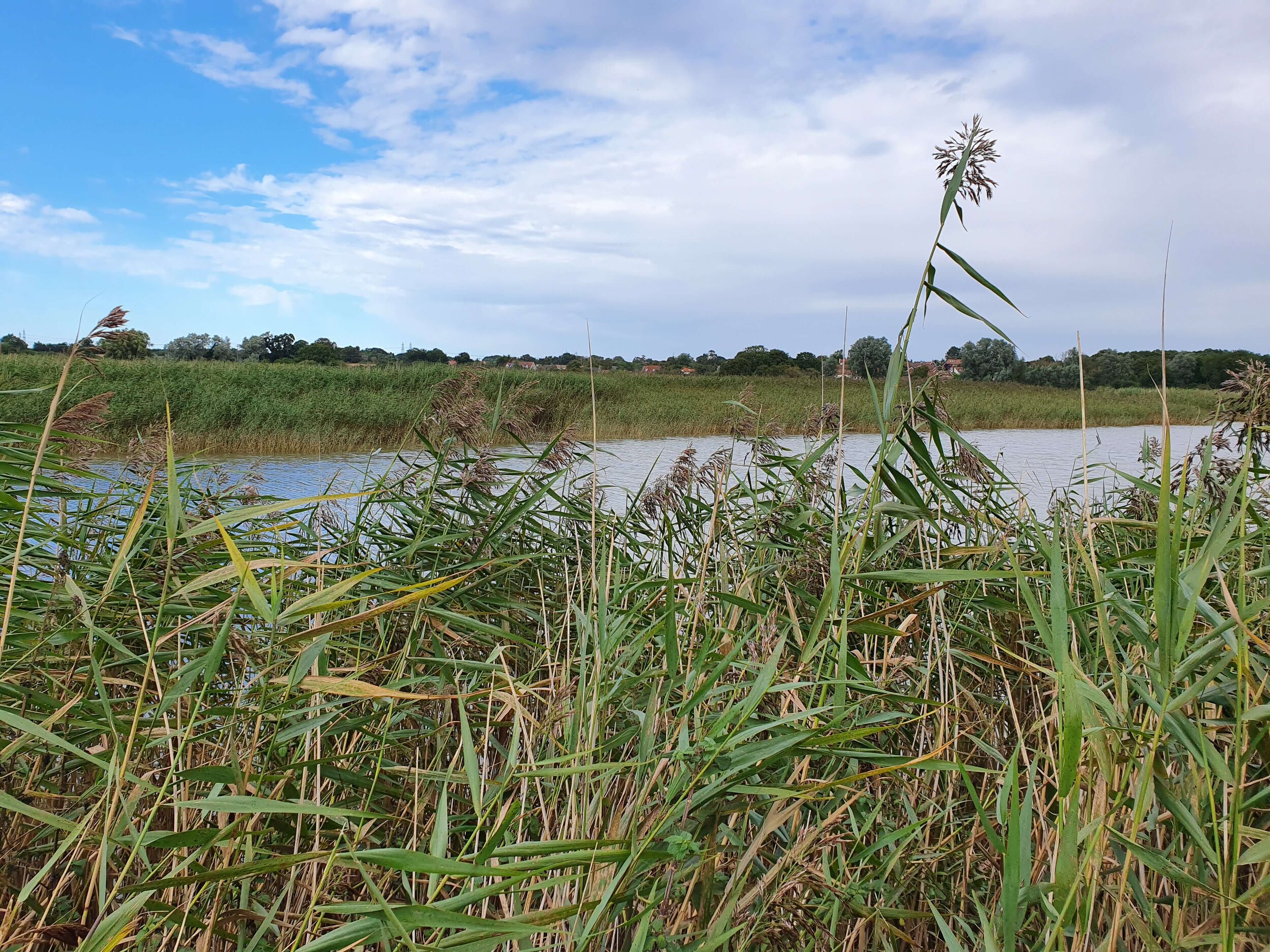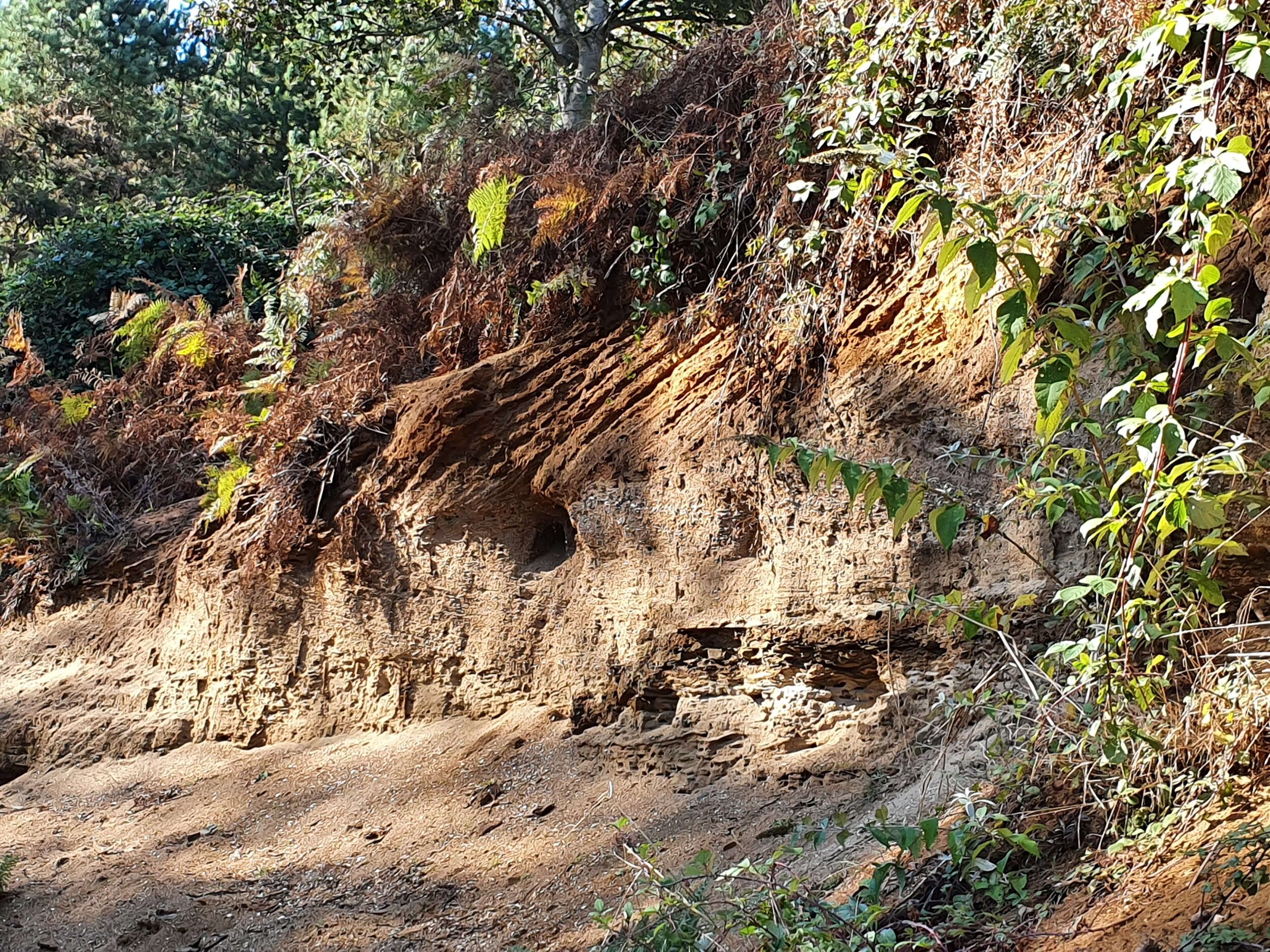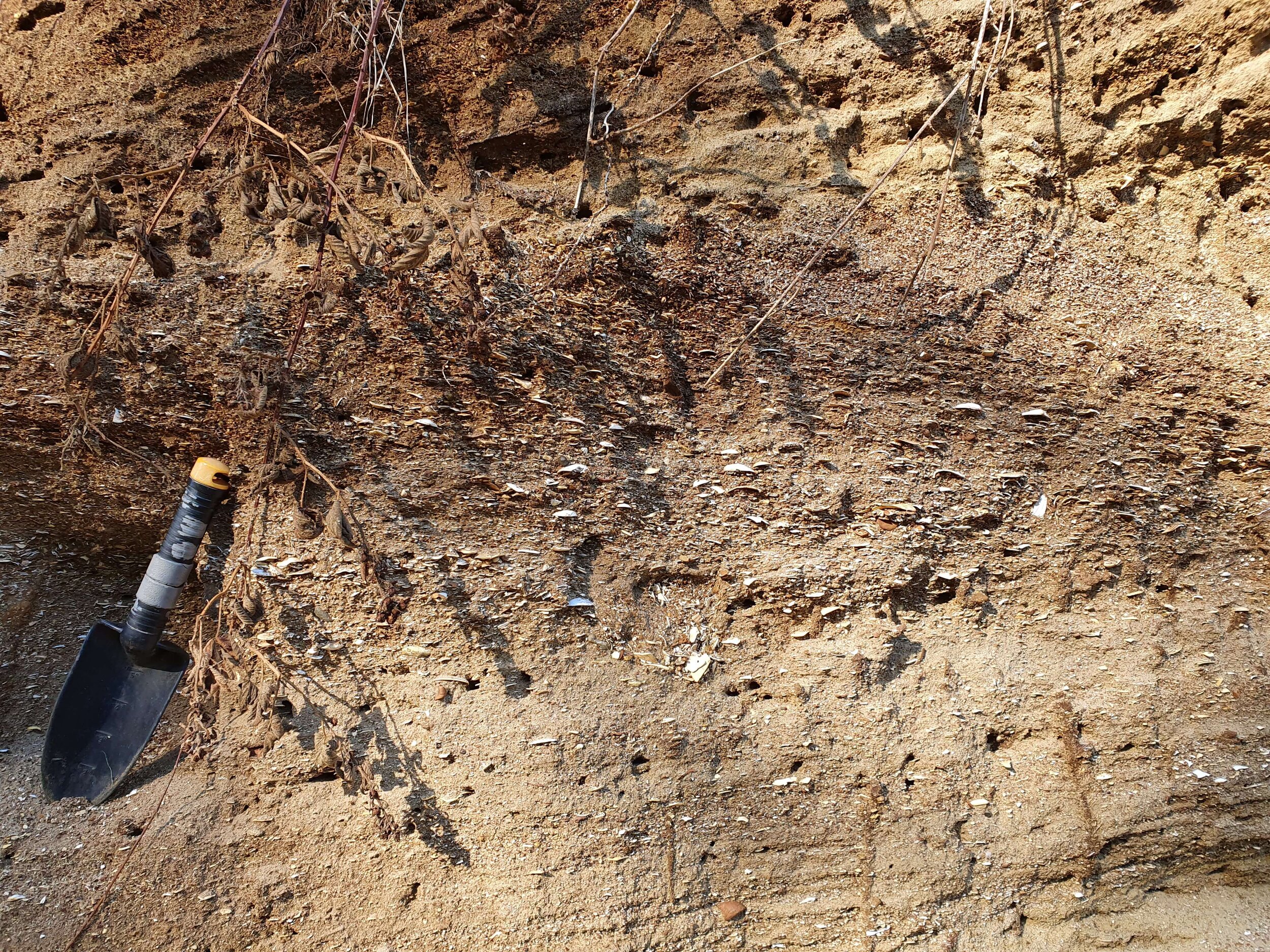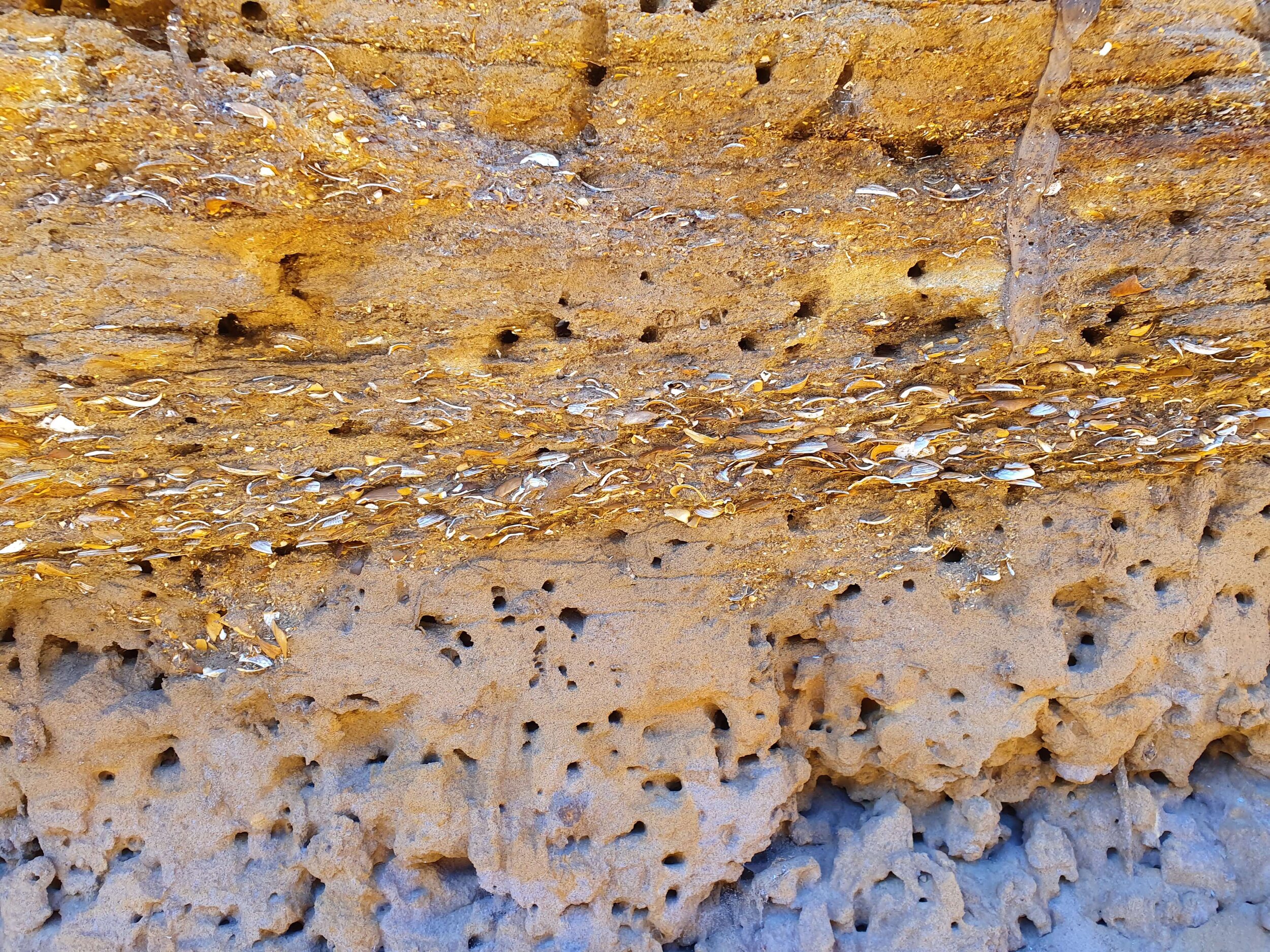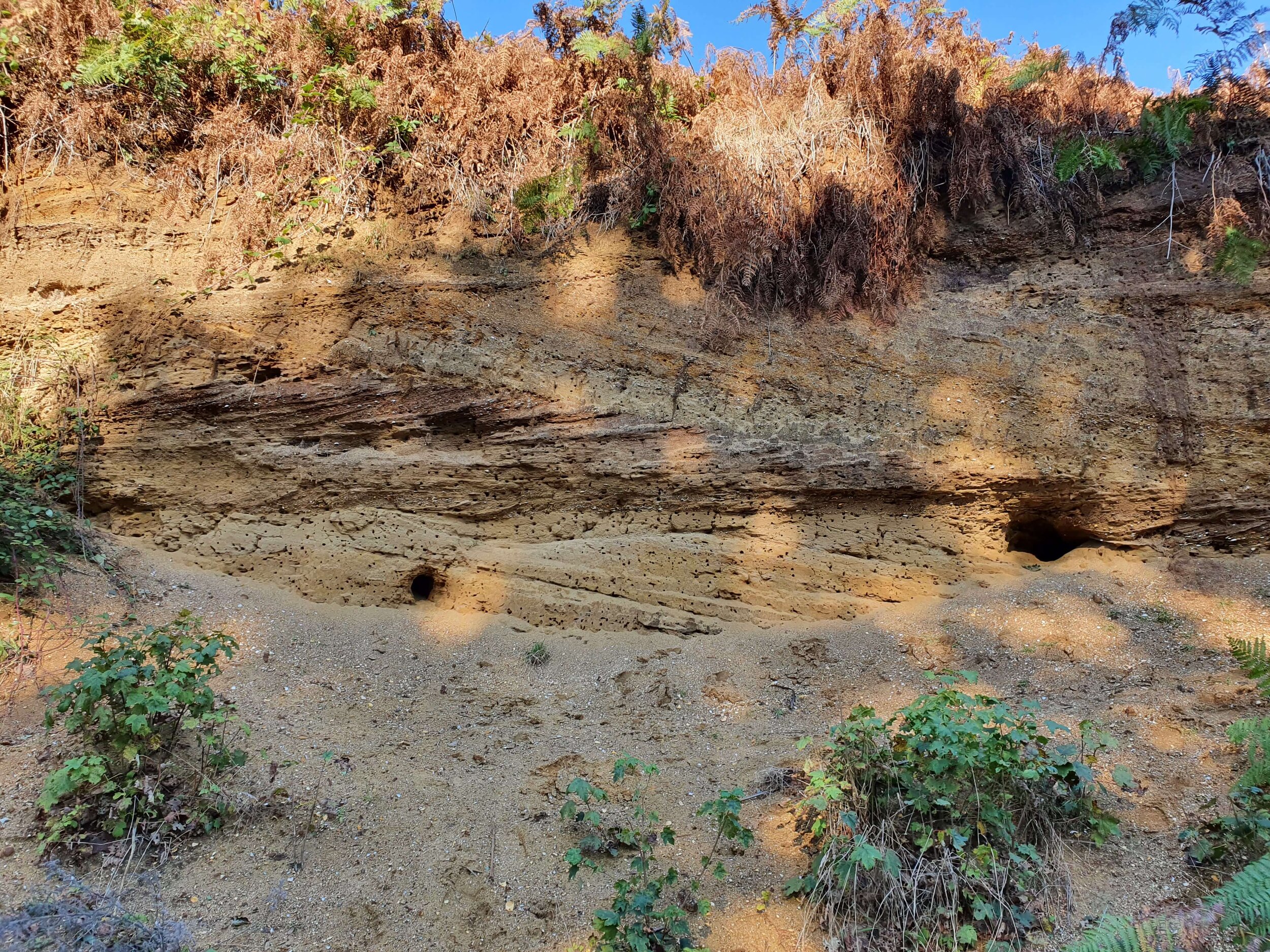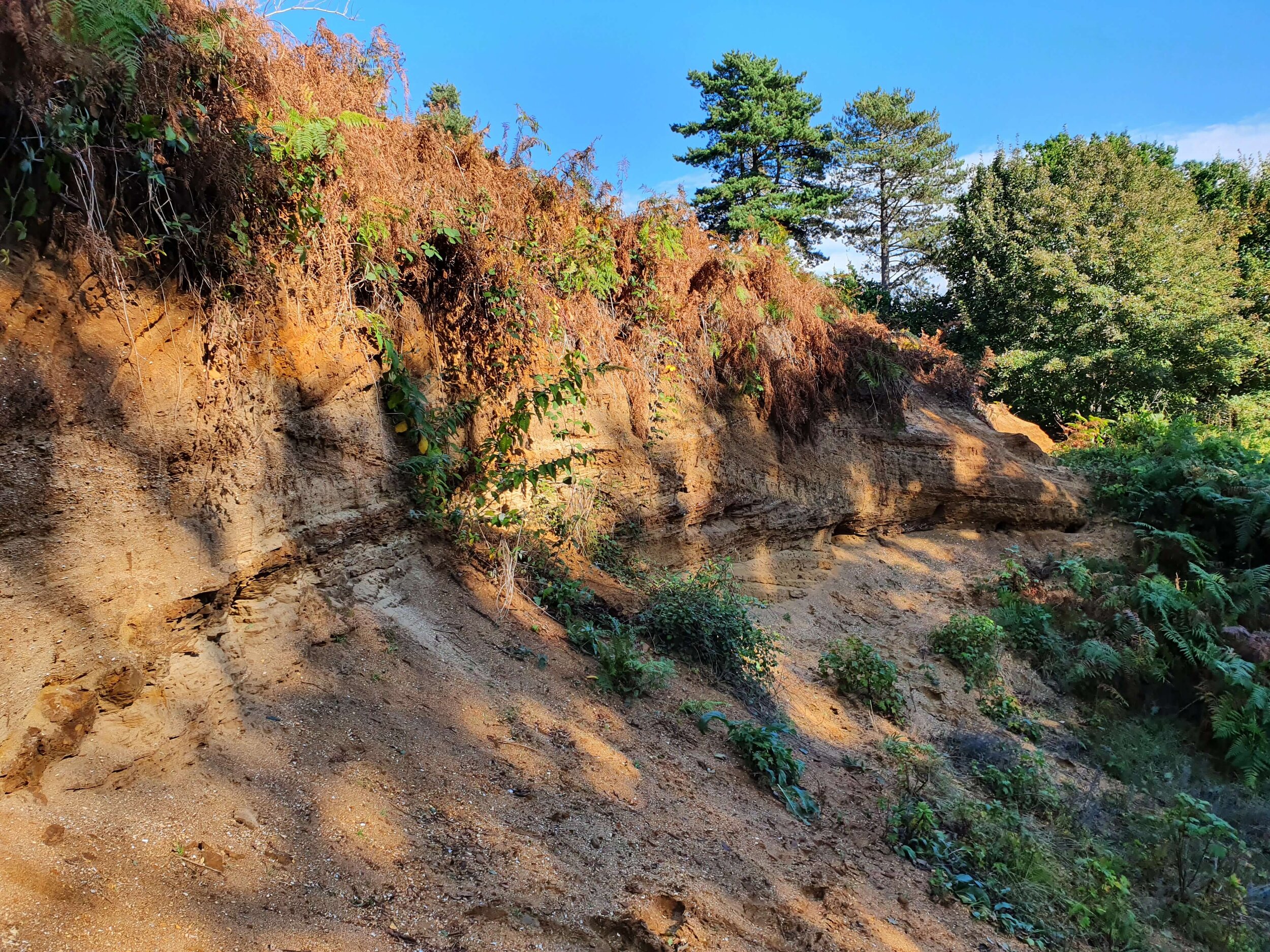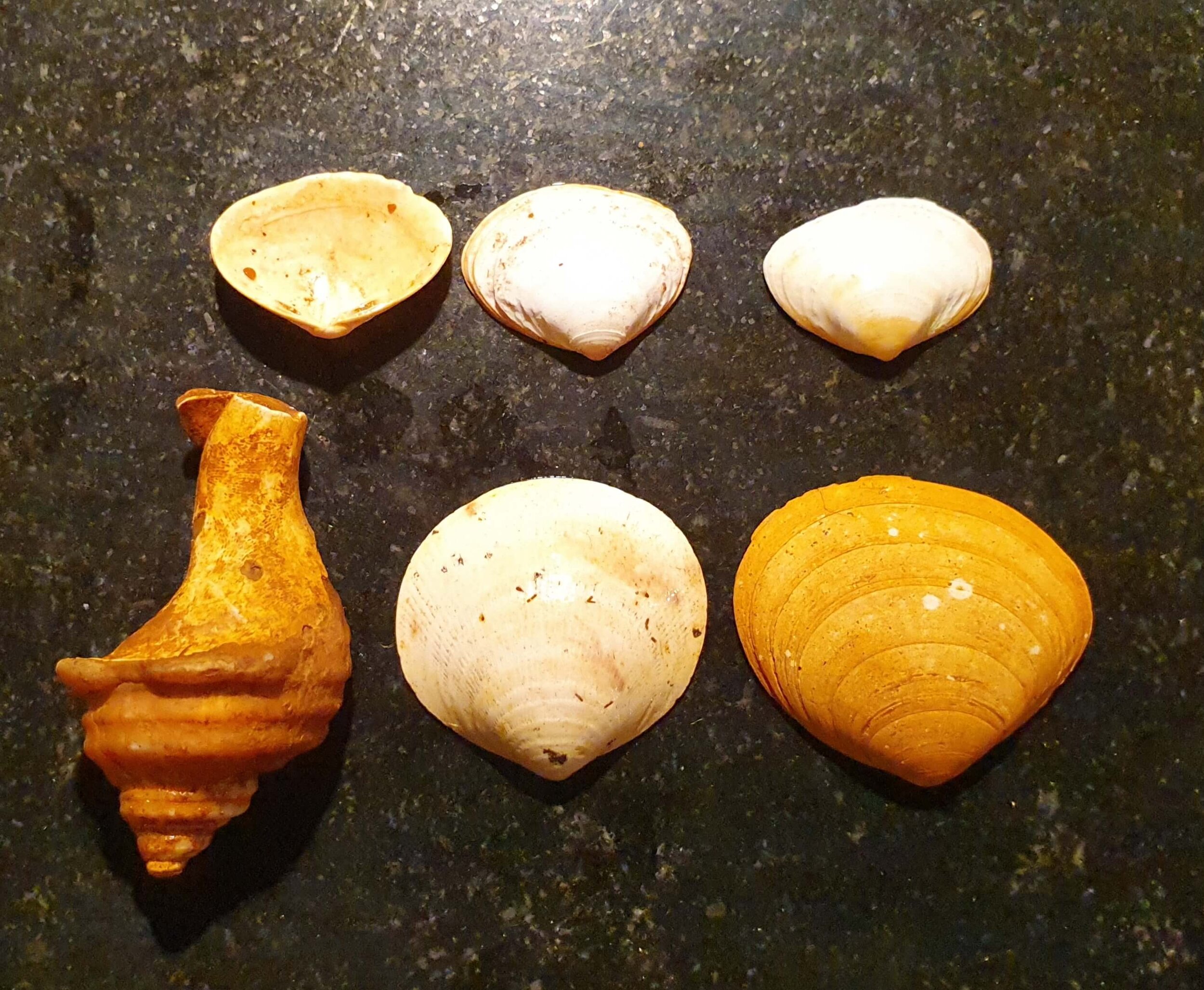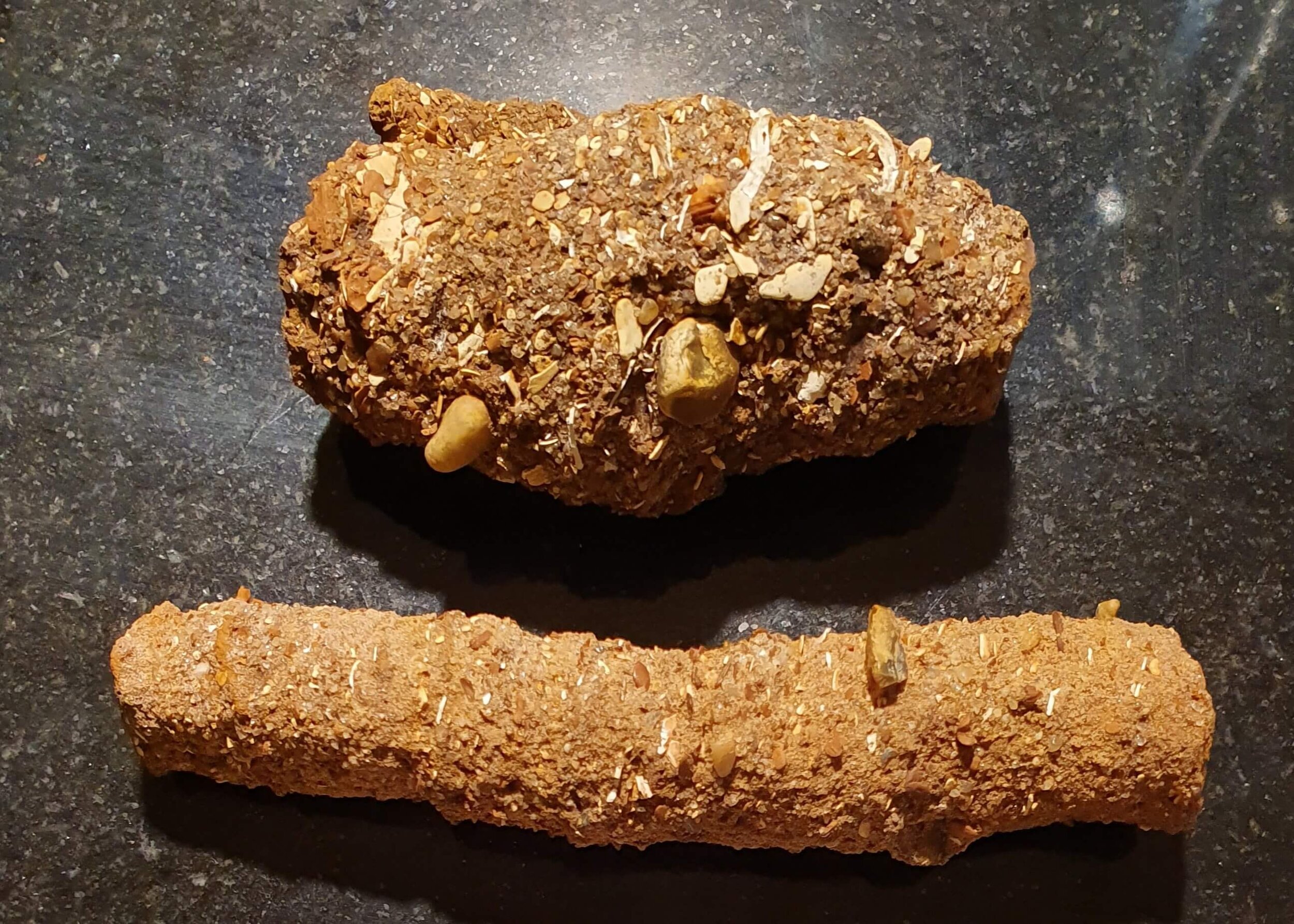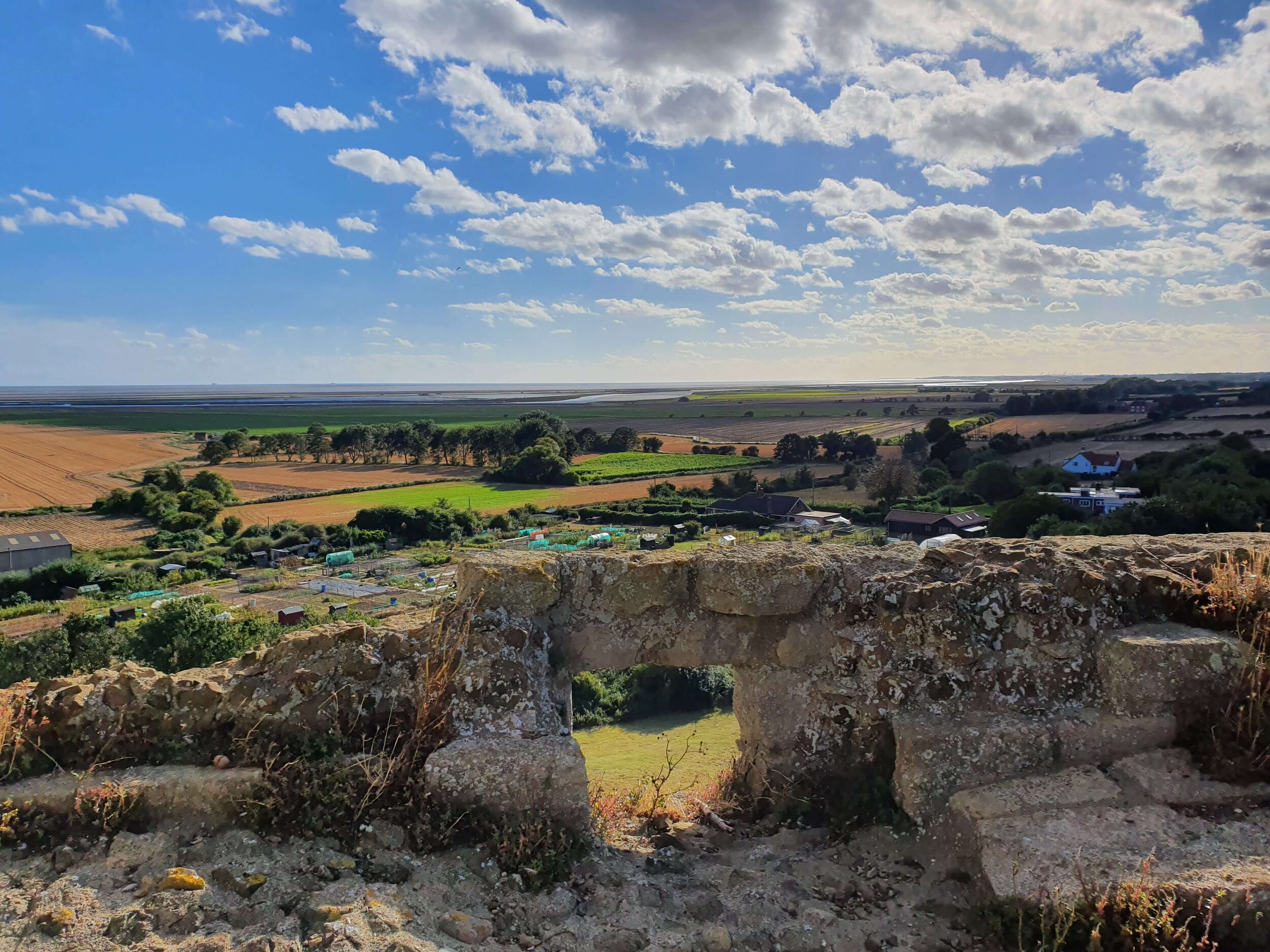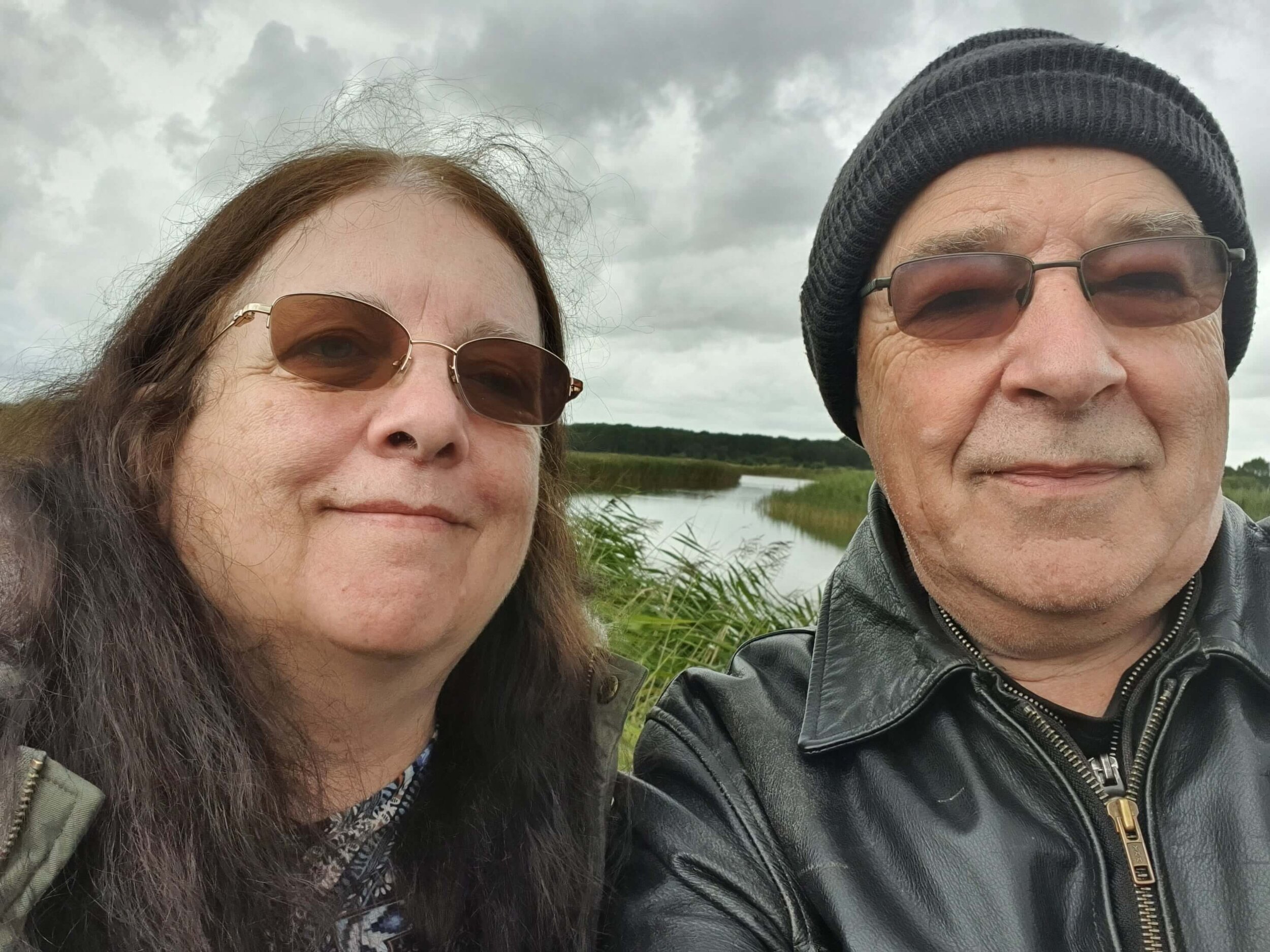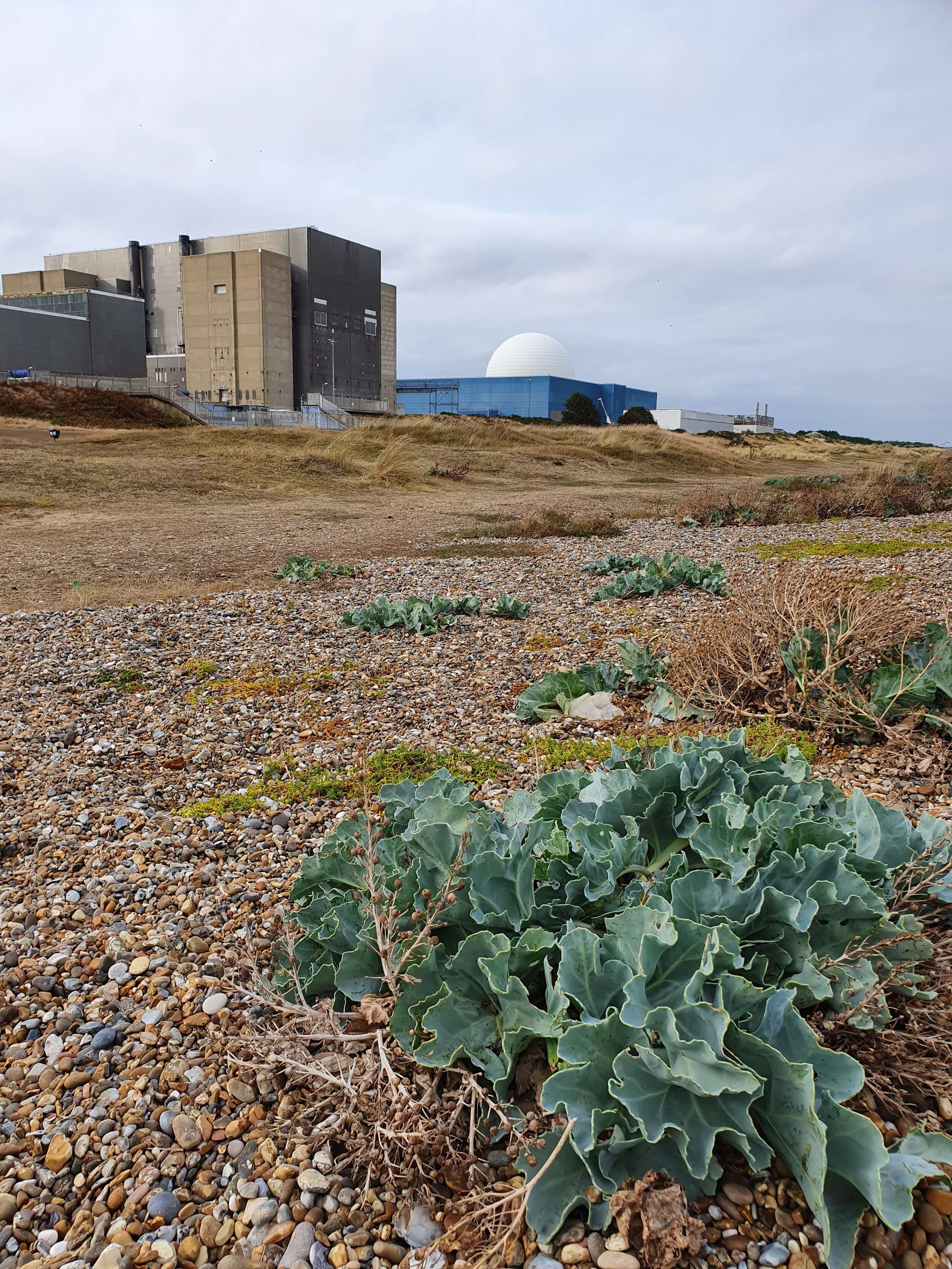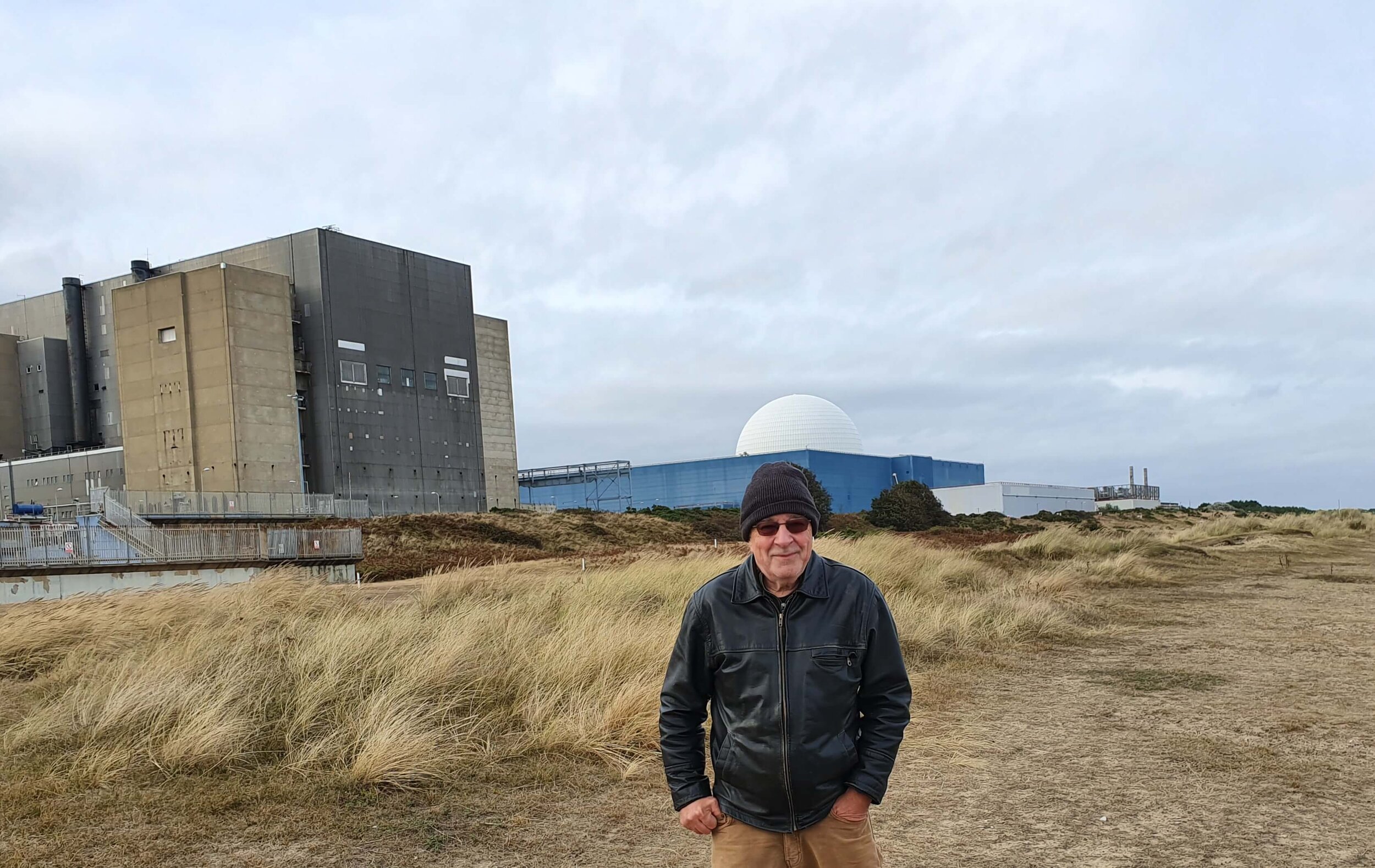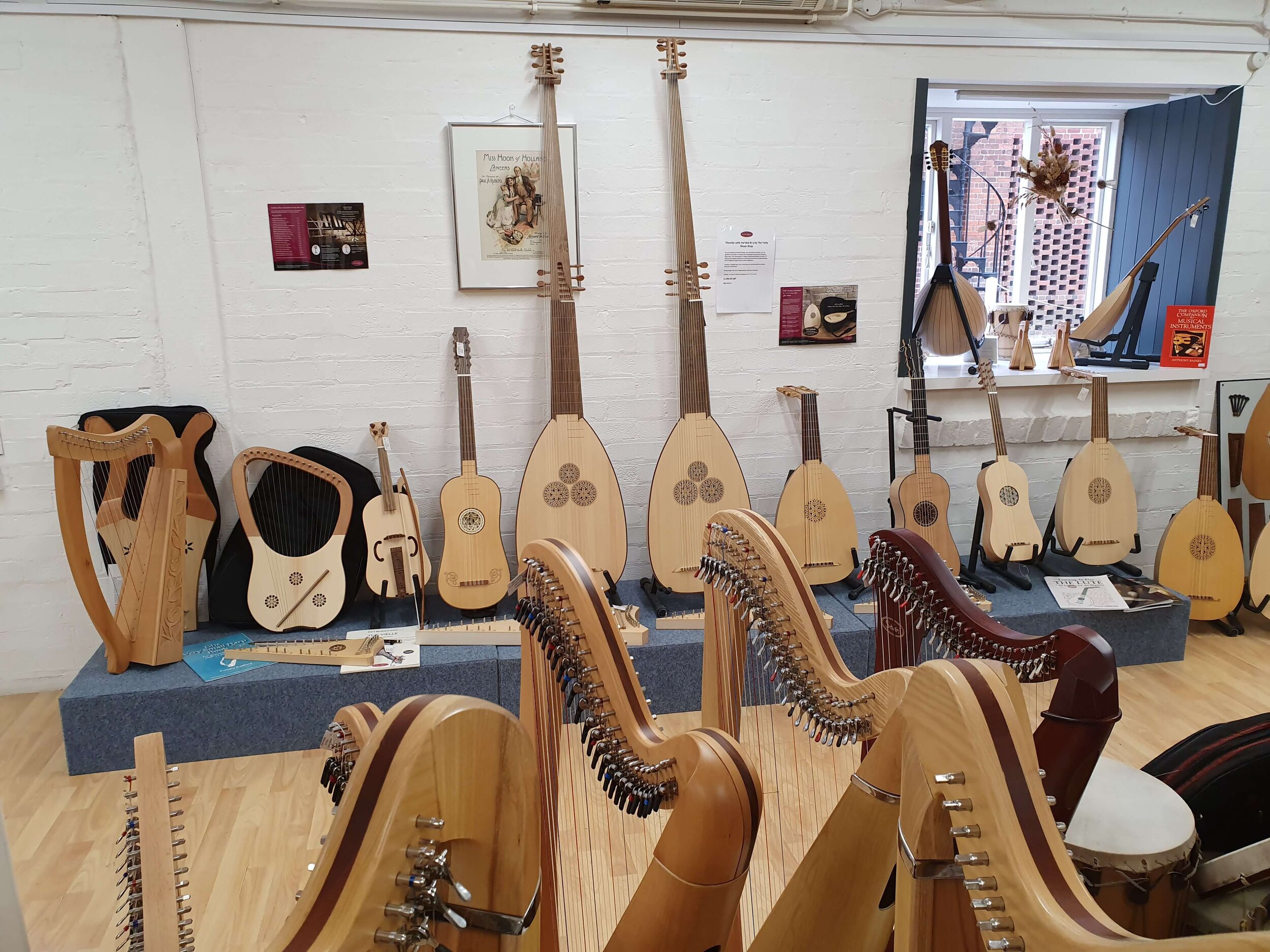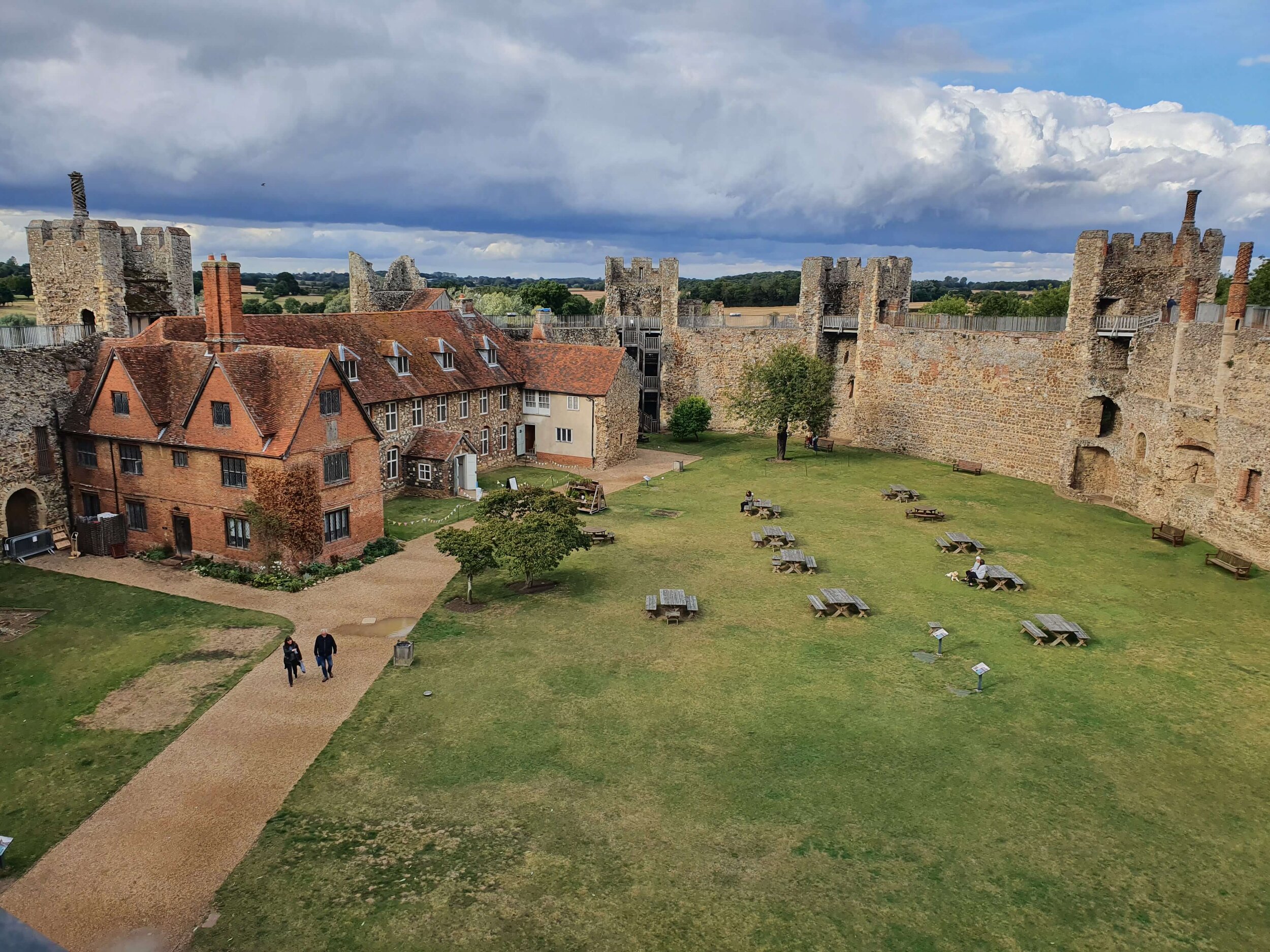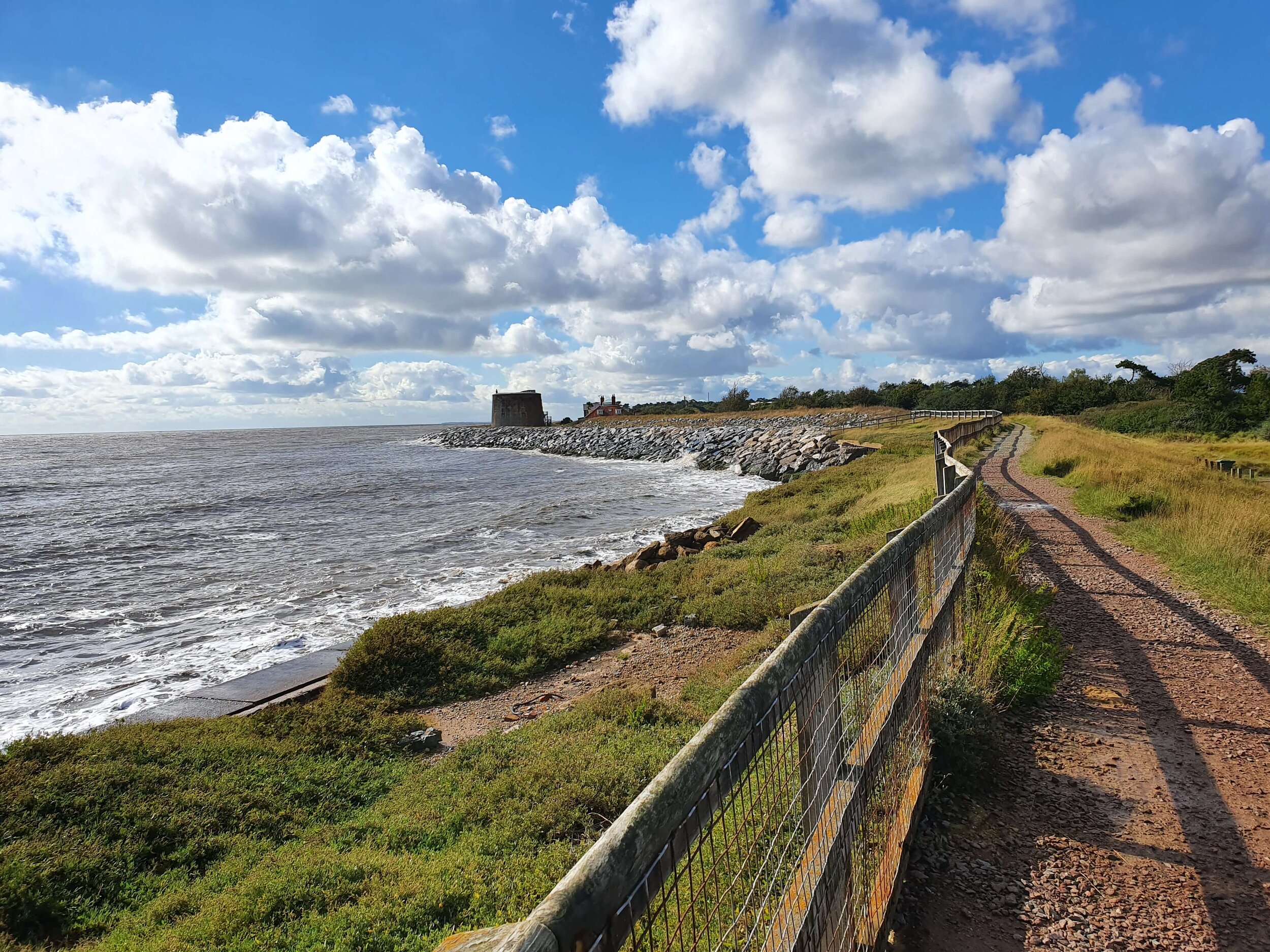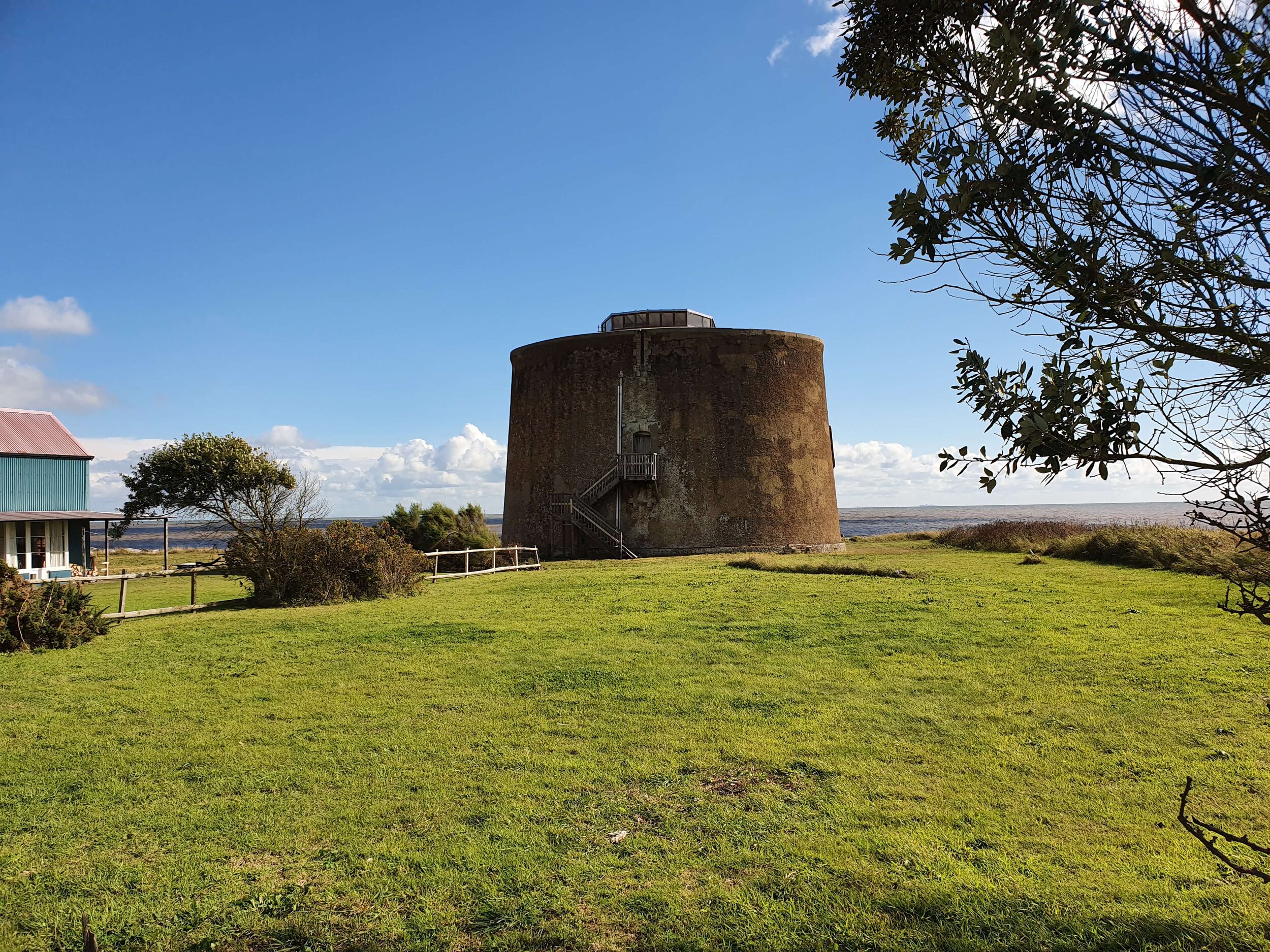Exploring Suffolk’s wild coast
Our first extended trip away after 2 years of Covid-19 took us to Suffolk, a place we have never really explored. Standing on the shores of the North Sea is a poignant reminder of where much of England’s economic well-being (and my wages) came from. Especially given the reminders of the new energy world – massive wind farms visible offshore, and Sizewell nuclear power station on the coast. I’ve been a strong advocate of nuclear power as long as I can remember, so was good to get as close as we did to the station. I had no idea you could just walk on the shore alongside of it. Staying in Aldeburgh, we also took the opportunity to visit some of the 12th Century castles (Framlingham and Orford) and the forbidding Martello Towers – relics from the Napoleonic Wars. Geologically, finding good locales wasn’t easy, but after much effort we finally found an old quarry in the famous Red Crag (Pliocene age, 3.3 to 2.5 Ma) at a place called Capel Green, near Butley. The Red Crag is a ferruginous shelly deposit formed in nearshore sand waves, as shown by the impressive cross-bedding. Some fossils are shown in the pics. Despite the appearance, the nodules in the photo are not coprolites - it looks to me like they are post-depositional ironstones, probably formed by water percolating through the deposit.
Lastly, I couldn’t resist throwing in a picture of the Early Music Shop at The Maltings, Snape. A brilliant place, that did little to deter my musical instrument addiction!

